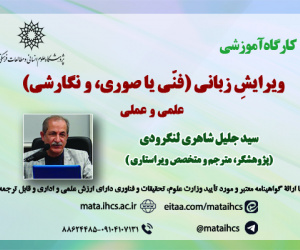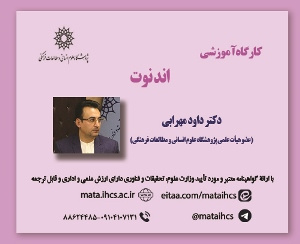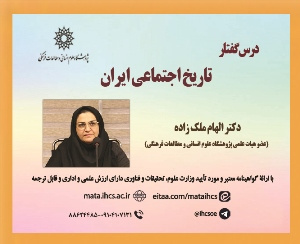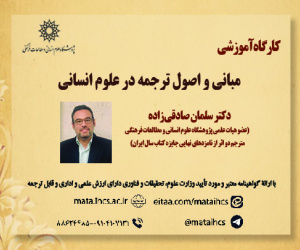ارزیابی کارایی مدل های سری زمانی در تعیین بهترین مدل برای پیش بینی بارش های سالانه ایستگاه های منتخب شمال غرب ایران
آرشیو
چکیده
بارش به عنوان یکی از مهم ترین عناصر اقلیمی و مؤلفه ای اصلی و تعیین کننده در بیلان آب هر منطقه تلقی می گردد. تغییر زمانی و مکانی بارش برحسب نوع اقلیم هر منطقه متفاوت بوده و این تغییر به ویژه در مناطق دارای اقالیم خشک و نیمه خشک بیشتر است. منطقه شمال غرب ایران علاوه بر نیمه خشک بودن، به دلیل کوهستانی بودن شاهد تغییرات زمانی و مکانی زیادی ازنظر بارش است. شناخت و بررسی این متغیر و روند آن می تواند در پیش نگری ها و ترسیم چشم انداز تغییرات احتمالی آن مفید و مؤثر واقع شود. در این پژوهش برای پیش بینی بارش سالانه ایستگاه های منتخب شمال غرب ایران شامل: تبریز، ارومیه، سقز، زنجان، سنندج و خوی طی دوره آماری ۶۱ ساله (۲۰۲۱-۱۹۶۱) از سری زمانی استفاده گردید. به منظور ارزیابی ایستایی مدل از تابع خودهمبستگی استفاده شد و داده های ناایستا با به کارگیری روش تفاضل گیری به داده های ایستا تبدیل شدند. سپس مدل های تصادفی برای تعیین بهترین مدل برای برازش بارش ایستگاه ها مورد ارزیابی قرار گرفتند. توزیع سری زمانی و تحلیل روند معادله خط رگرسیون بارش ایستگاه های همدید شمال غرب برحسب میلی متر نشان دهنده این است که شیب خط در همه ایستگاه ها، روند کاهشی دارد و کاهش بارش در ایستگاه ها بین ۱ تا ۳ میلی متر در سال برآورد شده است. از بین مدل های میانگین متحرک (MA)، اتورگرسیون (AR)، مدل میانگین متحرک خودهمبسته (ARMA) و مدل میانگین متحرک تجمعی خودهمبسته (ARIMA) برحسب مقدار قدر مطلق آماره T بیش تر از مقدار ۲، P– value کمتر از ۰۵/۰ و کمترین مقدار معیار اطلاعات آکائیکی (AIC)، مدل (۰، ۰، ۱) AR برای ایستگاه های سقز، زنجان، ارومیه، خوی و تبریز و مدل (۱،۰،۱) ARIMA برای ایستگاه سنندج به عنوان بهترین مدل تعیین شدند. نتایج پیش بینی نشان دهنده افزایش بارش برای سال ۲۰۲۳ و کاهش بارش برای سال های ۲۰۲۴ و ۲۰۲۵ است.Evaluating the effectiveness of time series models in determining the best model for predicting annual rainfalls in selected stations in northwest of Iran
Rainfall is considered as one of the most important climatic elements and main and determining components in the water balance of any region. In addition to being semi-arid, the north-western region of Iran, due to its mountainous nature, witnesses many temporal and spatial changes in terms of precipitation. In this research, a time series was used to predict the annual rainfall of selected stations in the northwest of Iran including: Tabriz, Orumiyeh, Saqez, Zanjan, Sanandaj and Khoy during a statistical period of 61 years (1961-2021). In order to evaluate the stationarity of the model, the autocorrelation function was used, and the unstable data were converted to static data using the differentiation method. Then, the random models were evaluated to determine the best model to fit the rainfall of the stations. The distribution of time series and the trend analysis of the equation of the regression line of precipitation in the north-west synoptic stations in terms of millimeters show that the slope of the line in all stations has a decreasing trend and the decrease in precipitation in the stations is between 1 and 3 mm per year. It is estimated. Among the moving average (MA), autoregression (AR), autocorrelated moving average (ARMA) and autocorrelated cumulative moving average (ARIMA) models, according to the absolute value of the T statistic, it is greater than 2, P-value is less than 0.5 0 and the lowest value of Akaike information criterion (AIC), the (0, 0, 1) AR model for Saqez, Zanjan, Orumiyeh, Khoi and Tabriz stations and the (1, 0, 1) ARIMA model for Sanandaj station were determined as the best models. The forecast results show an increase in rainfall for 2023 and a decrease in rainfall for 2024 and 2025.





